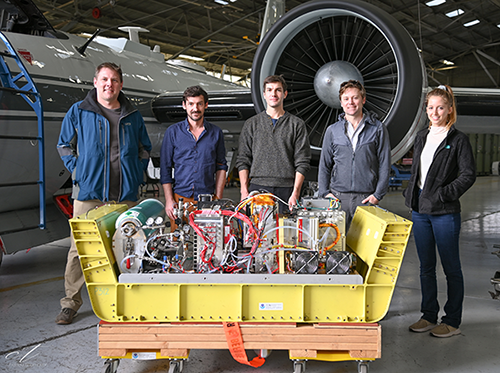Atmospheric Composition & Chemical Processes: Instruments
Strat-CIMS (High altitude Chemical Ionization mass spectrometer)

Principle of the Measurement
The NOAA Strat-CIMS is a chemical ionization mass spectrometer specifically designed for in situ measurements of gas phase inorganic and organic analytes in the upper troposphere and lower stratosphere. The instrument uses a custom-built ionization source that employs a commercially available photoionization krypton lamp, to produce iodide ions (I-) which react with target analytes through an adduct formation reaction. Adduct ions are subsequentially detected with a commercial high-resolution time-of-flight mass spectrometer from TOFWERK / Aerodyne Research Inc.
This NOAA Strat-CIMS instrument was engineered specifically for deployment in harsh environments including low ambient pressures (60 mbar) and temperatures (190K). Operation on remote airborne platforms is fully automated.
Species Measured
- Reactive Nitrogen species: N2O5, HNO3
- Halogen species: BrO, Br2, Cl2, ClNO2
- Organic species: HCOOH (formic acid) and other low to intermediate volatility organics
Time Response
Instrumental response <1 sec, Field response is limited by inlet surface affinity for each compound
Detection Limit
Precision on 1s data various by species
Accuracy
(30% + 0.03 pptv) for N2O5
(30% + 4 pptv) for ClNO2
(20% + 2 pptv) for Cl2
(20% + 4 pptv) for Br2
(15% + 160 pptv) for HCOOH
Manufacturer
Tofwerk / Aerodyne Research Inc., custom modified for airborne deployment with support from design lead Rich McLaughlin
Field Projects
Key Publications
Breitenlechner, M., G.A. Novak, J.A. Neuman, A.W. Rollins, and P.R. Veres, A versatile vacuum ultraviolet ion source for reduced pressure bipolar chemical ionization mass spectrometry, Atmospheric Measurement Techniques, doi:10.5194/amt-15-1159-2022, 2022.